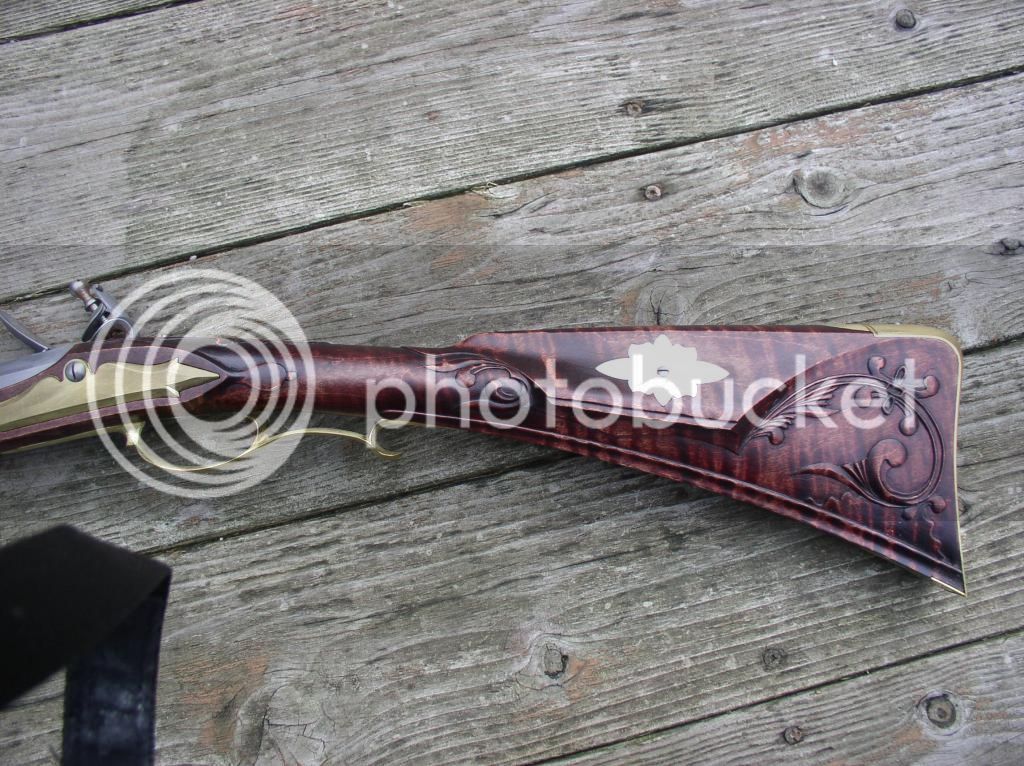When I first started building LRs {1977}, I read about wet sanding stocks and this was espoused by John Bivens......who was the foremost builder of LRs at that time.
Wet sanding is a process of staining and applying LMF sealer which normally would be the finish. But then the wet sanding is done to really smooth all the surfaces including the carving. LMF sealer is slightly thinned w/ mineral spirits or the cheaper paint thinner and the finish is removed by sanding the finish off. This requires 220 grit wet/dry paper to be shaped into rolls or flats to suit the surface being sanded and constantly being dipped in the thinned LMF sealer.
The sanding is done to the bare wood and makes one realize that the stain and finish don't really penetrate hard maple very deeply....at the most a couple of .001s.
But if the sealer has gone deeper, the "Super Stain" penetrates right through any sealer and the result of all this is an extremely smooth, perfectly stained stock.... a very nice reddish brown.
Below is the original color of my last Bucks county LR which I didn't really like and as soon as I apply the LMF sealer and Wahkon Bay finish to the wet sanded stock and "Super Stained" stock, I'll post some picks.
Just thought this might be an altertnative to stripping stocks w/ various finish removers....Fred

Wet sanding is a process of staining and applying LMF sealer which normally would be the finish. But then the wet sanding is done to really smooth all the surfaces including the carving. LMF sealer is slightly thinned w/ mineral spirits or the cheaper paint thinner and the finish is removed by sanding the finish off. This requires 220 grit wet/dry paper to be shaped into rolls or flats to suit the surface being sanded and constantly being dipped in the thinned LMF sealer.
The sanding is done to the bare wood and makes one realize that the stain and finish don't really penetrate hard maple very deeply....at the most a couple of .001s.
But if the sealer has gone deeper, the "Super Stain" penetrates right through any sealer and the result of all this is an extremely smooth, perfectly stained stock.... a very nice reddish brown.
Below is the original color of my last Bucks county LR which I didn't really like and as soon as I apply the LMF sealer and Wahkon Bay finish to the wet sanded stock and "Super Stained" stock, I'll post some picks.
Just thought this might be an altertnative to stripping stocks w/ various finish removers....Fred






